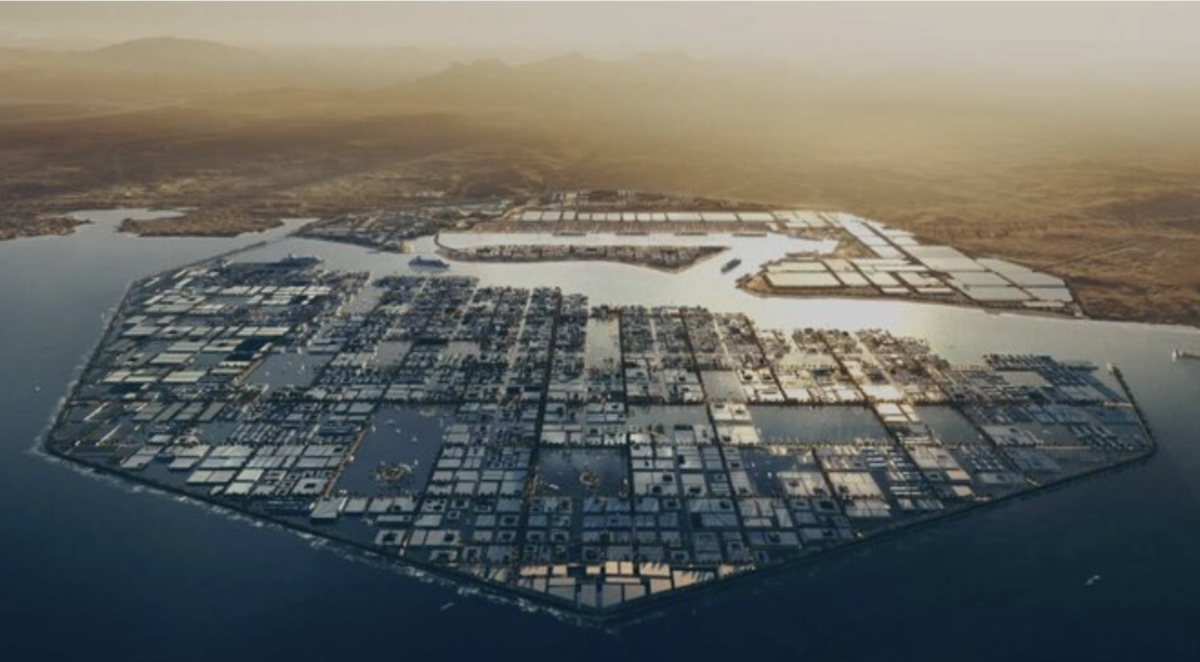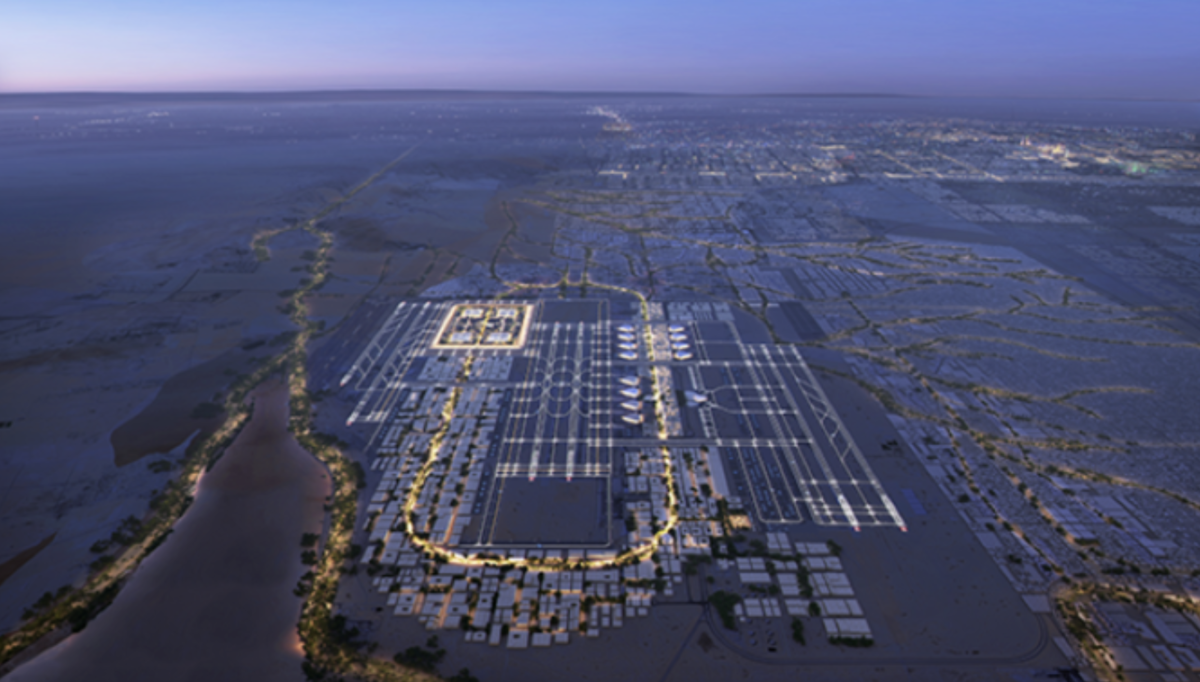RIYADH: Saudi Arabia’s cement industry is poised to maintain its position as a key player in the global market, by harnessing circular economy principles and navigating challenges using digital innovation, according to an industry expert.
Amr Nader, CEO and co-founder of cement consultancy A3&Co, told Arab News that most of the Kingdom’s plants in the sector boast state-of-the-art technologies, which will enable them to reach digital maturity for achieving operational excellence and de-carbonization goals.
While some plants are initiating proper strategic initiatives in this area, others are still in the early stages of trials.
However, Nader believes that the transition to digital maturity is on the priority list of most plants and is expected to materialize within the next 2 to 5 years.
According to TechSCI Research, Saudi Arabia’s white cement market reached a value of $165.11 million in 2022, and is anticipated to grow at a compounded annual growth rate of 11.93 percent during the forecast period spanning from 2024 to 2028.
Key projects like NEOM and Qiddiya, along with the expansion of transportation networks and entertainment centers, have spurred a notable increase in the demand for high-quality cement in the Kingdom.
Nader believes this growth will come alongside major shifts in the sector, and said: “We anticipate a cost reduction and improved value addition, leveraging circular economy and even for net-zero transition if the right technologies at the efficient sizes are adopted.”
The CEO elaborated on the significance of adopting oxy-fuel technology at suitable scales, emphasizing its use of oxygen and recirculated flue gasses for burning fuels instead of air.
This approach, combined with increased reliance on renewable energy sources and the anticipated integration of low-carbon hydrogen as a fuel source, indicates the potential for Saudi Arabia’s cement industry to sustain its competitive advantage beyond 2030 according to Nader.
These initiatives form part of a comprehensive de-carbonization strategy aimed at lessening the sector’s ecological impact while preserving its market standing.
Nader further highlighted that the Saudi competitive pricing edge is driven by lower production costs even after factoring in carbon adjustment border taxes, potentially increasing exports to regions with stringent carbon regulations.
“In regard to the carbon boundary tax of Europe and other carbon boundary taxes in the world, we see that as an opportunity for further export from Middle East plants that will early adopt near-zero transitions in a time frame between 2024 and 2028,” he said.
Carbon boundary taxes, also known as carbon border adjustment mechanisms, are policies implemented by governments to address carbon leakage.
They ensure that industries subject to carbon pricing within their jurisdictions remain competitive with foreign industries that may not face similar levies..
These taxes aim to prevent the relocation of industries to countries with weaker climate policies while also encouraging other nations to adopt similar carbon pricing measures.

Projects like OXAGON at NEOM have been fueling the cement sector. File
Nader highlighted challenges affecting demand in the cement sector, such as heightened sea freight costs, reduced vessel availability due to geopolitical tensions, and increased pricing by Saudi plants to counter higher energy costs from Aramco.
“Despite the increase in fuel prices by average 100 percent for all fuels, the production cost in efficient Saudi plants is still lower than the global average by approximately 15 percent and there is still room to improve that by adopting operational excellence,” he added.
He explained that large companies in the Kingdom, with capacities exceeding 8,000 tonnes per day, have significant opportunities for improvement by implementing Operational Excellence Strategies and early adoption of near-zero science-based targets initiative verified strategies.
This will not only reduce costs further but also enables them to remain below the global cost average by the same 15 percent, even with the anticipated increase in energy prices next year, he added.
Reduced government investment has posed another challenge according to Nader, causing a slowdown in large-scale projects and consequently diminishing the demand for cement.
This trend translated into a 4 percent decline in domestic sales and a 30 percent drop in exports for Saudi Arabia’s 17 cement firms during the first quarter of 2024 compared to the same period last year, as reported by Al-Yamama Cement.
Notably 97 percent of cement sales were domestic, with only 3 percent being exported.
Despite this drop in sales, the Kingdom stands as the largest cement producer in the region, housing several of the most significant cement-manufacturing firms in the area, according to Global Cement.
The most prominent firms in Saudi Arabia, based on market capitalization according to Bloomberg data, include Al Yamama Cement, with a market cap of SR6.95 billion, followed by Saudi Cement at SR6.82 billion, Southern Province Cement at SR5.5 billion, then Qassim Cement, and Yanbu Cement.
Nader linked the recent decline in domestic sales to certain giga-projects in the Kingdom that demand green cement, a product not commonly manufactured in most of Saudi Arabia’s plants.
“Nevertheless it must be noted that Saudi Arabia consumption per capita is still one of the highest in the world at approximately 1.3 tonnes per capita yet the utilization of the sector is less than 60 percent due to high installed capacity in the period between 2013 and 2017,” Nader added.
In its April report, Al-Jazira Capital also associated the decline with the increased influence of Ramadan on sales, noting that the holy month spanned 21 days in March 2024, compared to just 9 days in the previous year.
Nader had emphasized in a February interview with Aggregates Business that the Middle East’s cement plants, characterized by their large size, enjoy advantages in economies of scale and operational efficiency. With most plants equipped with modern technology and automated processes, they outperform their European counterparts, some of which date back to the 1950s.
Additionally, the region’s abundant solar, wind, and land resources present opportunities for the adoption of green energy, positioning the Middle East cement sector to lead in sustainability initiatives globally.
Looking ahead, Nader foresees a growing emphasis on sustainability and de-carbonization in the region, leading to increased production of green products.
Furthermore, he predicts a doubling of cement exports from the Middle East within the next two to three years, with Saudi Arabia, the UAE, and Algeria currently leading as the largest exporters.





























